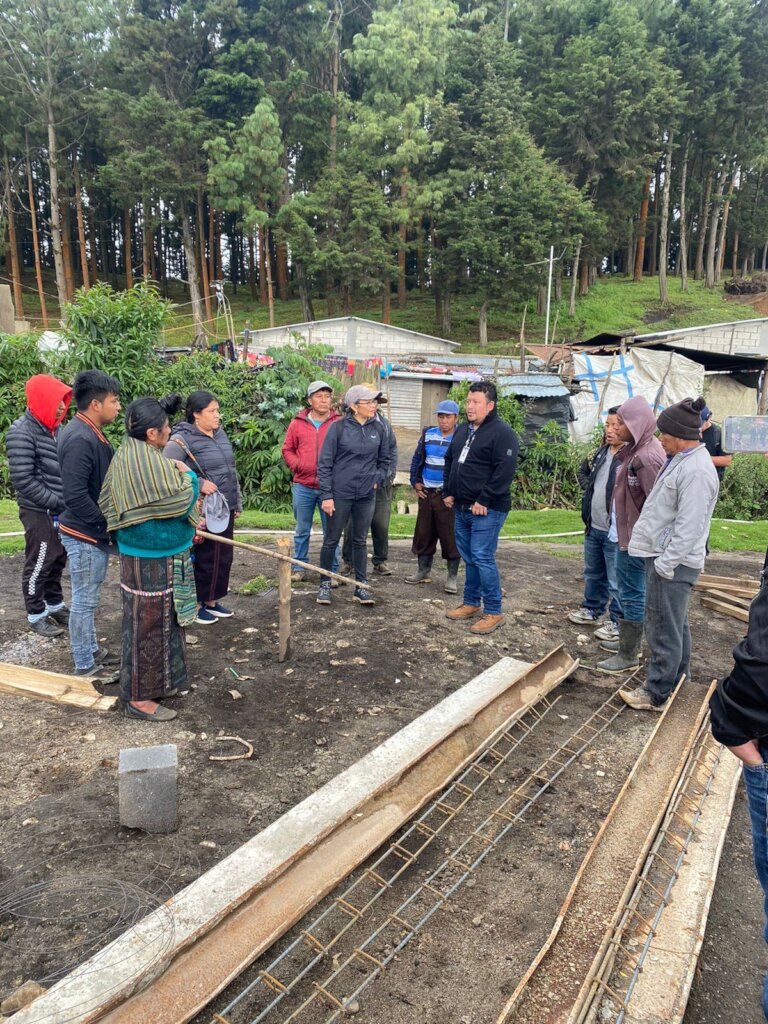By Ben Blevins | Community Organizer
Building effective sanitation systems for relocated communities requires more than technical expertise—it demands a deep understanding of local contexts. Here’s what makes the process uniquely intricate:
The Power of Grassroots Accompaniment
Despite these challenges, bridges can—and must—be built to overcome gaps between funder expectations, government limitations, and community priorities. One powerful approach is grassroots accompaniment. Grassroots organizations like AMA (Highland Women’s Association) have demonstrated the importance of empowering communities to take active roles in designing and managing vital projects like sanitation infrastructure. Working alongside community leaders, these organizations help residents understand the legal and technical pathways to secure government support and sustain infrastructure investments. By combining traditional knowledge with cutting-edge practices, grassroots initiatives empower Indigenous voices in crafting solutions that work. For example:
Through these efforts, AMA has helped communities access government-funded sanitation systems, schools, and clinics in rural Guatemala. This success demonstrates the potential of grassroots accompaniment as a solution-oriented approach to bridging cultural divides and addressing challenges displaced Indigenous communities face.
The Need for Cultural Competency in Sanitation Design
Effective sanitation design requires more than just technical expertise. It also demands an understanding of cultural norms, values, and beliefs. For many Indigenous communities, traditional practices around waste management reflect a deep connection to the land and a reverence for nature. For example, some communities view human waste as sacred and believe improper disposal could desecrate their ancestral lands. As such, sanitation design must consider this cultural context to be effective and respectful.
Additionally, climate change displacement can disrupt traditional practices and knowledge around proper sanitation. Migration often means relocation to urban or peri-urban areas where access to resources and infrastructure may be limited. In these cases, culturally appropriate solutions prioritizing community input are necessary for successful implementation.
To achieve culturally competent sanitation design, collaborations between Indigenous communities, local organizations, and government agencies are crucial. By incorporating traditional practices and knowledge into sanitation projects, we can create solutions that meet technical standards and honor the cultural heritage of displaced Indigenous communities.
In conclusion, the challenges faced by displaced Indigenous communities in Guatemala demand a multifaceted and culturally competent approach to address issues of land rights, governance, and migration due to climate change. This requires collaboration between state authorities and grassroots organizations and a deep understanding of the cultural context in which these communities live. Through innovative solutions such as grassroots accompaniment and culturally competent sanitation design, we can work towards creating sustainable systems that respect the rights and traditions of Indigenous communities while also addressing the urgent needs of the present. Let us continue to advocate for the empowerment and inclusion of marginalized voices in shaping solutions that promote social, environmental, and cultural justice. So let's keep striving towards a future where displaced Indigenous communities can thrive in their ancestral lands with dignity and respect.
By Lesly Ramirez | Well Being Promoter, Midwife & Doula
By Ian Donegan | Outreach & Content
Project reports on GlobalGiving are posted directly to globalgiving.org by Project Leaders as they are completed, generally every 3-4 months. To protect the integrity of these documents, GlobalGiving does not alter them; therefore you may find some language or formatting issues.
If you donate to this project or have donated to this project, you can receive an email when this project posts a report. You can also subscribe for reports without donating.
Support this important cause by creating a personalized fundraising page.
Start a Fundraiser